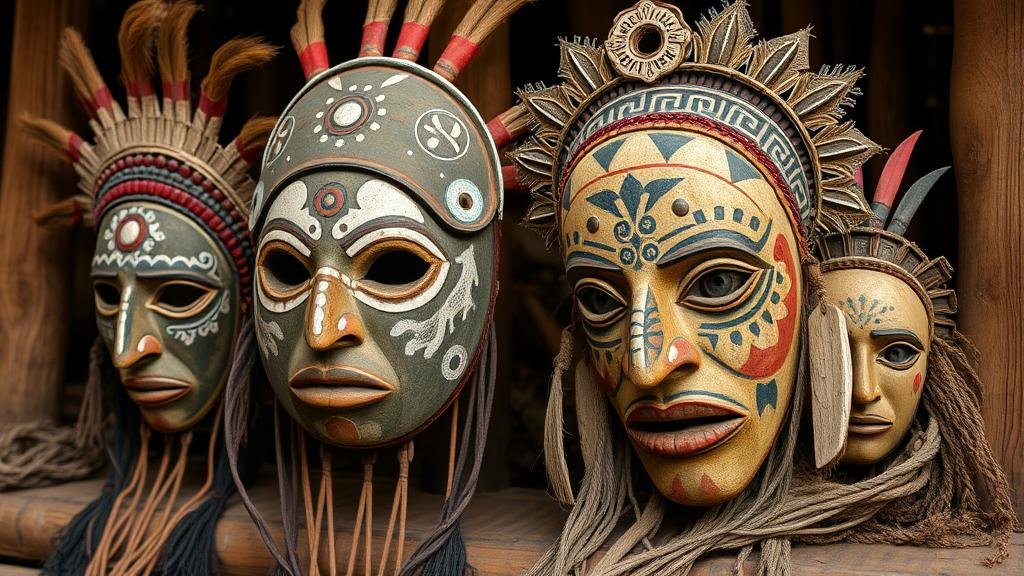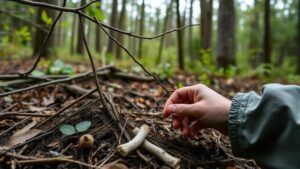Recovering Ritual Masks and Decorations in Known Tribal Meeting Areas
Recovering Ritual Masks and Decorations in Known Tribal Meeting Areas
The recovery of ritual masks and decorations in known tribal meeting areas is an essential aspect of cultural heritage preservation. These artifacts not only serve as symbols of identity but also as carriers of historical significance, embodying the traditions and beliefs of various tribes. Understanding the methods involved in their recovery and the cultural value they hold can help in fostering respect for indigenous communities and their cultural expressions.
Significance of Ritual Masks and Decorations
Ritual masks and decorations play a pivotal role in many tribal cultures, often used in ceremonies, storytelling, and rites of passage. For example, in the cultures of the Pacific Northwest, Native American tribes utilize masks in potlatch ceremonies and dances, reflecting their deep connection to mythology and ancestral teachings. These artifacts are not merely decorative; they are integral to the expression of communal values and spiritual beliefs.
Historical Context and Cultural Relevance
Historically, many ritual masks have been associated with specific events, such as harvests, marriages, or memorials. They are often crafted from materials specific to the local environment, such as wood, animal hides, and plant fibers. art of mask-making can involve complex techniques, including carving, painting, and embellishing with feathers or beads.
- For example, the Dogon people of Mali produce masks that reflect their cosmology and social structure, with each mask tied to specific deities or agricultural cycles.
- In contrast, the Yoruba of Nigeria create intricate masks for their festivals, symbolizing community connection and the celebration of life.
The cultural relevance of these artifacts extends beyond their initial use; they serve as historical documents that provide insights into the social dynamics and belief systems of a tribe. Artifacts from different periods can indicate changes in societal values and traditions, making their recovery critical for understanding cultural evolution.
Techniques for Recovery
Recovering ritual masks and decorations involves a systematic approach that combines archaeological methods with ethnographic understanding. Following are some common techniques used in the recovery process:
- Field Surveys: Archaeologists conduct surveys of known tribal meeting areas to locate artifacts. This may include examining surface finds, sifting through soil, and using ground-penetrating radar to identify potential sites.
- Excavation: Once a site is identified, careful excavation is performed to retrieve artifacts. This process necessitates precision to avoid damage, as many masks may be fragile due to age and environmental factors.
- Interviews with Elders: Engaging with tribal elders and community members can yield crucial information about the significance and history of the masks, as well as their original locations.
Case studies, such as the recovery of the Kachina dolls and masks from the Pueblo tribes in the Southwest United States, demonstrate successful collaboration between archaeologists and indigenous communities, resulting in fruitful new understandings of these artifacts roles in rituals and community life.
Challenges in the Recovery Process
Despite the importance of these recovery efforts, several challenges persist. One significant issue is the potential for cultural appropriation and ethical concerns regarding the removal of artifacts from their original contexts. Indigenous communities often view these items as sacred, and their removal can lead to feelings of disconnection and loss.
Another challenge arises from the deterioration of artifacts due to environmental factors and previous illegal excavations. Many masks may be found in poor condition, making recovery efforts complex and costly. Documentation and preservation strategies must be prioritized to ensure these cultural artifacts are not lost to time.
The Role of Technology in Recovery
Advancements in technology have significantly enhanced the recovery process. Techniques such as 3D scanning and modeling allow for detailed documentation of masks and decorations without physical handling, minimizing risk to fragile artifacts. Plus, digital databases facilitate the sharing of information among researchers and indigenous communities, fostering collaborative efforts in preservation.
- For example, organizations like the Smithsonian Institution utilize digital archives to maintain an inventory of artifacts while enabling tribes to access and research their cultural heritage.
- The use of drones for aerial surveys can also aid in identifying potential sites for excavation, especially in hard-to-reach areas.
Actionable Takeaways
The recovery of ritual masks and decorations in known tribal meeting areas is vital for preserving indigenous cultures and histories. Below are actionable takeaways for individuals and organizations involved in such recovery efforts:
- Engage with indigenous communities and involve them in the recovery process to ensure culturally sensitive approaches and ethical practices.
- Use modern technology, such as 3D scanning and aerial surveys, to enhance the recovery and preservation process.
- Promote public awareness and education about the significance of these artifacts to foster respect and understanding of indigenous cultures.
To wrap up, the recovery of ritual masks and decorations requires a multifaceted approach that honors the cultural significance of these artifacts. Through ethical practices, technological innovation, and community collaboration, we can preserve the invaluable heritage they represent for future generations.



